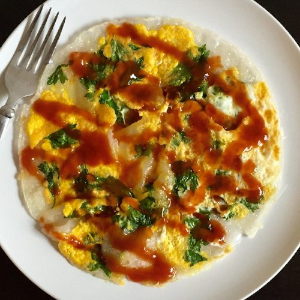Taiwan – formerly Formosa – has been controversial since the and the formation of the People’s Republic of China on the Asian mainland. That’s because its population is largely made up of the descendants of those who opposed the Communist revolution and relocated to the island…
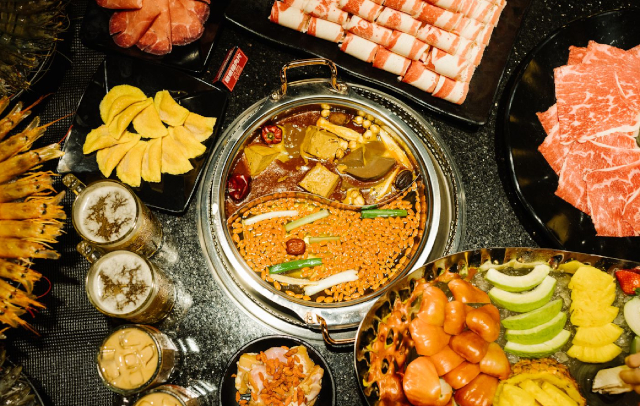 A Classic Taiwanese Hot Pot: A Chinese import beloved by all…
A Classic Taiwanese Hot Pot: A Chinese import beloved by all…
The main island of the Taiwan group, Formosa, is situated in the Pacific Ocean just off the east coast of mainland China, north of the Philippines and south of Japan. With a population of 23.45 million crammed into a land space of 35,808 square km (13,826 sq. mi.), Taiwan is one of the most densely populated countries in the world. Following a massive industrialization program that started in the 1960s, Taiwan has emerged as the 21st largest economy in the world, based heavily on its massive exports. Wikipedia notes: “It is [also] ranked highly in terms of political and civil liberties, education, health care and human development.” All in all, a pretty cosmopolitan society!
The food heritage
Historically, Taiwan has been influenced by a number of strong cultures which have all blended into something uniquely Taiwanese. Indigenous tribes ruled the island’s culture and cuisine from time immemorial to the 16th century, when massive immigration from southern China made a major contribution. China ceded Taiwan to Japan in the 1895, and the island remained under Japanese rule and cultural influence until the end of the Second World War. Thereafter cuisines from all across mainland China arrived with new periods of immigration, from Guangdong, Chaoshan, Shanghai, Sichuan and Beijing. And for almost as long, mainland China, under communist rule, has been pressing Taiwan and its democratic friends and neighbous to ‘return’ the island to it. And that’s why it’s been in the news lately.
So… What do we see on Taiwanese tables today as a result?
On our menu today
A visit to the Eating China website is mandatory for those who want to learn how all the elements of Taiwan cuisine fit together, and get a great overview of the the bounty of ingredients the island offers an intrepid chef.
There are more web sites than I can count dedicated to ‘The Best Taiwanese Dishes’. But a quick survey of the most comprehensive ones yields a short list of classic Taiwanese mains and sides on which most authorities agree…
Beef Noodles: A true Taiwanese staple. Beef cuts from shanks to steak simmered until tender in rich, dark beef broth are cooked with chili peppers, bok choy, onions and other root veggies, and topped with chopped green onions (scallions) just before serving.
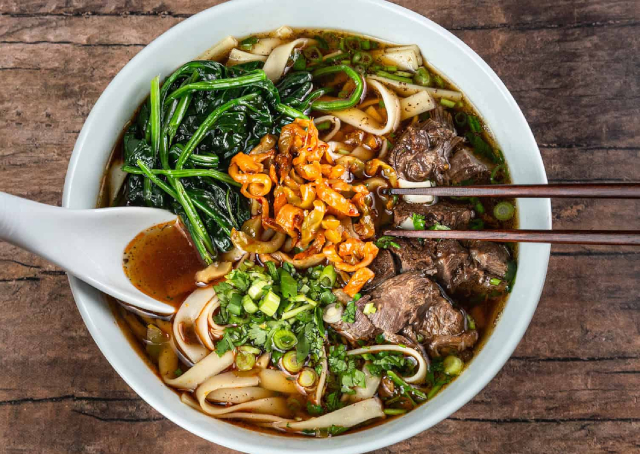
Everybody eats it, at least a couple of times a week. Noodles range from wide and flat (as above) to regular pulled round one, to vermicelli.
Lou Rou Fan: Braised Pork with Rice: A rich stew of pork shoulder or belly, simmered in soy sauce, dried shrimps, shallots, garlic, 5-spice powder and sugar.
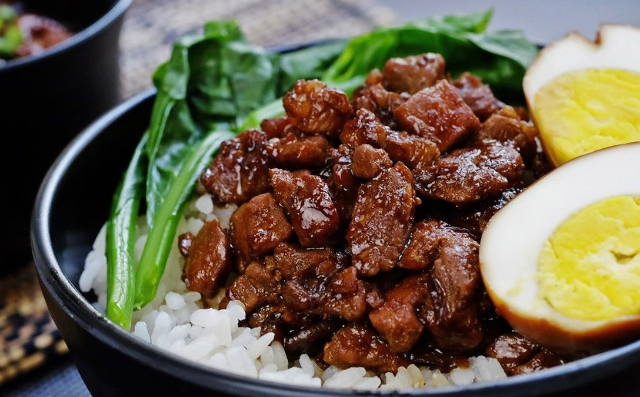
Served with steamed rice, bok choi or other leafy green veggie, and hard boiled eggs.
Oyster Omelet: The omelet uses oysters, sweet potato flour, and eggs mixed with water and vegetable oil, and dosed with chopped leafy greens (bok choy, spinach, celery, etc.). The red sauce it’s served with is as much a part of the dish as the omelet itself. It’s a sweet-tart blend of soy sauce, ketchup (or red pepper sauce, if you really like it hot), miso, vinegar and corn starch to thicken. (See photo, top of page.)
Milkfish: Milkfish is not a specific species of fish but a rage of white fish. It’s used in congee (a chowder-like soup), pan fried, braised, and in fish balls. One of the most popular of dishes is the congee where the skin is left on the milkfish, and a shallow filet is removed, leaving some boneless fish. This recipe produces a luxurious, thick congee you’ll never forget!
Gua Bao: Taiwanese Pork Sandwich. You probably know of bao either from Korean food or that animated movie about the little bao bun that comes to life and befriends a little Asian kid.
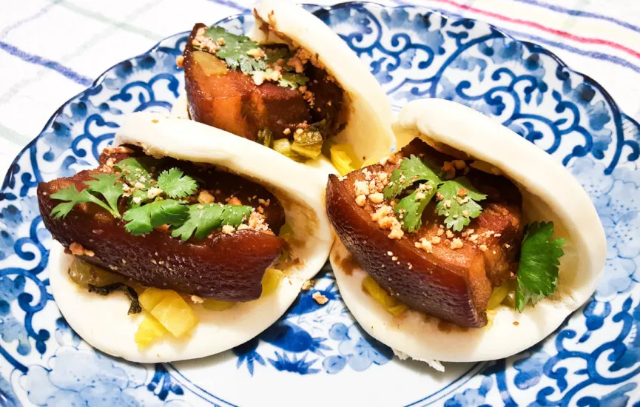
Well… The Taiwanese bao bun is the same thing, with only minor changes in the recipe. It’s the sandwich’s traditional Taiwanese filling that sets the island’s version apart. Think of a big, fat slab of roast pork with al the fixings…
Iron Eggs: These are a unique Taiwanese specialty – not century eggs or any kind of pickled eggs – made by repeatedly simmering hard boiled eggs in strong black tea, soy sauce, rock sugar, chilies and 5-spice. They’re described as chewy, spicy and unlike anything else you’ve ever tasted. But everybody – even kids – love them. (Unlike the aforementioned 100-year or pickled specialties!)
Tian Bu La: Tiawanese Fish Tempoura. What it says. Traditionally, it’s salt-water white fish, deep fried in an ultra-light tempura batter. Enjoy it hot out of the fryer for the best experience.
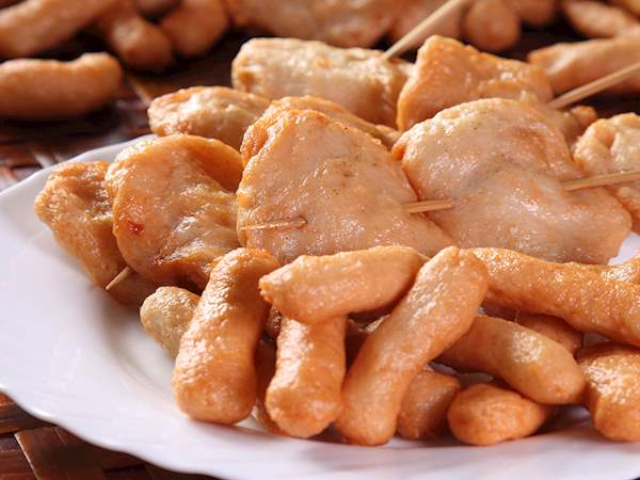
And don’t forget the dipping sauce(s). Anytime, anywhere food! In fact, it’s Taiwan’s officially unofficial, but unofficially official national street food!
Fish Paste Meatballs: Mostwanese folks buy ready-made fish paste frozen from their supermarket. Some mix it with ground pork and spices to make little meatballs which are served in a soup of julienne-sliced veggies. Fish paste as an ingredient is often incorporated into dumplings or molded into fish cakes.
Ba wan: Jumbo Meat Balls. It’s essentially a flattened ball of dough made with sweet potato and corn starch mixed with rice flour filled with savoury stuff cut up fine.

The principle ingredients are usually pork, bamboo shoots, and shiitake mushrooms. To be ‘real deal’, you have to top it with a sweet-sour sauce, like the one they whip up for the oyster omelet!
Spicy Hot Pot: Definitely a Chinese import. Just what a Hot Pot should be. A little of everything waiting top be simmered in a bubbling pot of spicy broth. It’s labour intensive to prepare but the Taiwanese love it so much they don’t seem to care. I found this website which offers some cultural commentary about the Taiwanese love affair with the Hot Pot!
And that’s just a small sample…
… Of the great mains you’ll encounter on any Taiwanese restaurant menu. What ever else you do, remember that Taiwanese cuisine is rooted in its naturally-occurring ingredients and its South Eastern Chinese influences. There’s a whole world of rice, vermicelli noodle, fish and seafood, steamed balls, spring rolls, soups, scallion pancakes, and grilled specialties we haven’t even touched on. And there are enough trademark sauces and condiments to fill a whole post all by themselves.
Tomorrow, we’ll look at Taiwanese breads and baked goods – which cross over from sweet to savoury with the greatest of ease…
~ Maggie J.

